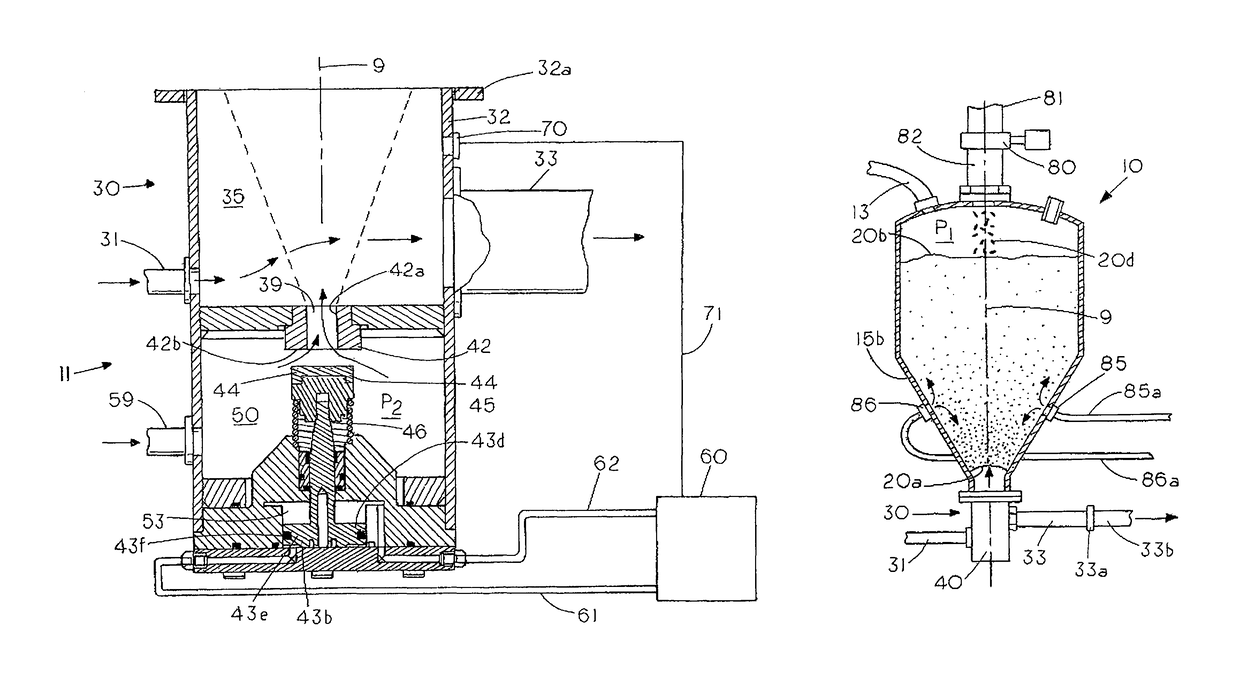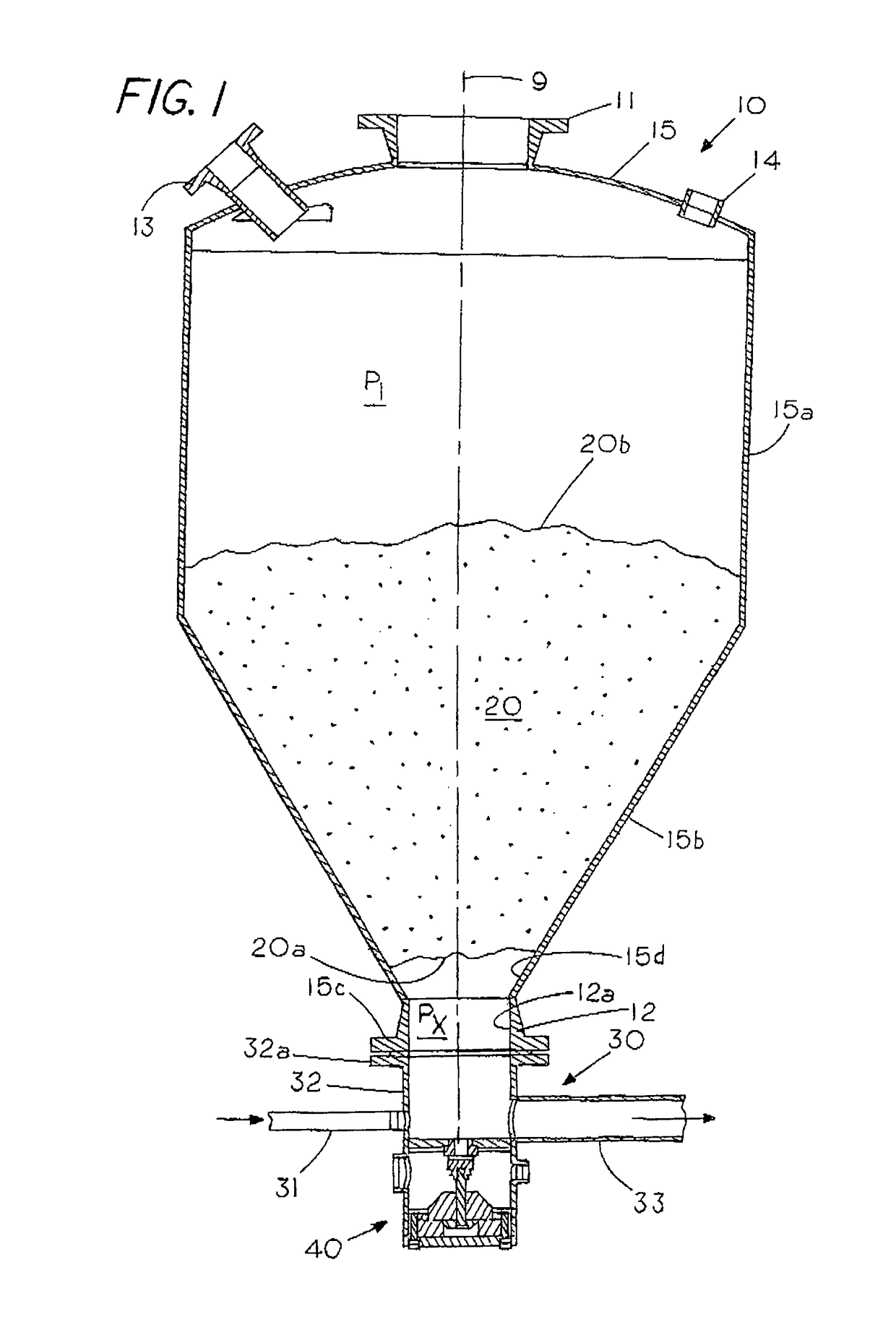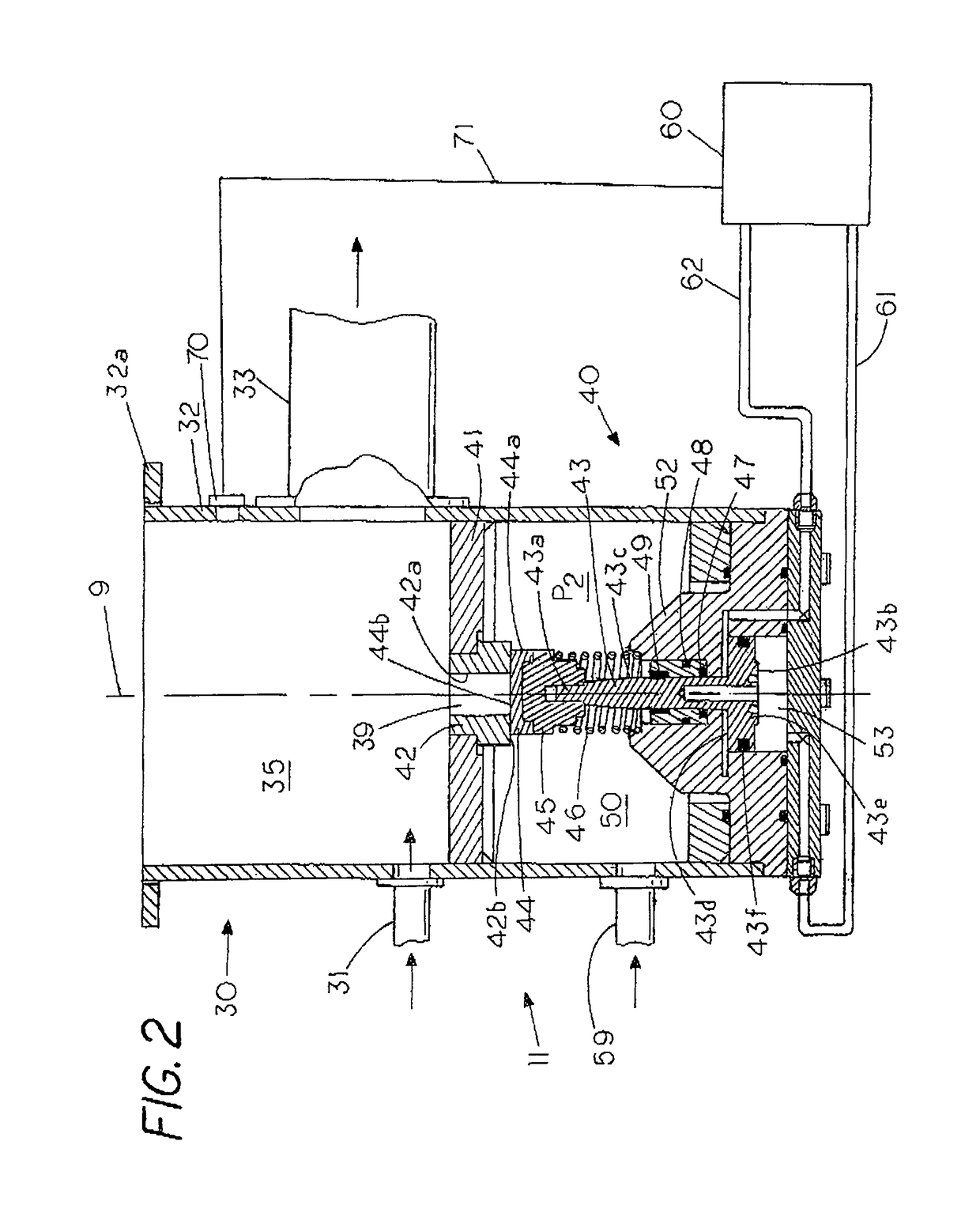Conveying systems
a technology of conveying system and material, applied in the field of conveying system, can solve the problems of consuming a large amount of energy, reducing the life of the system, and reducing the efficiency of the system, so as to achieve smooth and continuous conveying of materials, and reducing the energy consumption of breaking the bridge.
- Summary
- Abstract
- Description
- Claims
- Application Information
AI Technical Summary
Benefits of technology
Problems solved by technology
Method used
Image
Examples
Embodiment Construction
[0019]FIG. 1 shows a cylindrical gravity hopper 10 having a vertical axis 9 extending through a cylindrical hopper inlet 11 located at the top of the hopper and a cylindrical downward facing or downward discharging hopper outlet 12 located at the bottom of the hopper. Hopper 10 includes a domed top 15 with a port 13, a port 14 and hopper inlet 11 located therein. In this example hopper 10 includes a cylindrical sidewall 15a and an intermediate open-ended cone 15b that converges from cylindrical sidewall 15a to a cylindrical hopper outlet 12, which has a cylindrical vertical sidewall 12a for directing material away from and out of the hopper 10. A flange 15c on outlet 12 allows one to secure a conveying system 30 to hopper outlet 12. Typically, one directs a batch of conveyable material into the hopper inlet 11 of the gravity hopper 10 where the conveyable material is gravitationally funneled to the hopper outlet 12 located at the bottom of the hopper 10. The conveyable material disc...
PUM
 Login to View More
Login to View More Abstract
Description
Claims
Application Information
 Login to View More
Login to View More - R&D
- Intellectual Property
- Life Sciences
- Materials
- Tech Scout
- Unparalleled Data Quality
- Higher Quality Content
- 60% Fewer Hallucinations
Browse by: Latest US Patents, China's latest patents, Technical Efficacy Thesaurus, Application Domain, Technology Topic, Popular Technical Reports.
© 2025 PatSnap. All rights reserved.Legal|Privacy policy|Modern Slavery Act Transparency Statement|Sitemap|About US| Contact US: help@patsnap.com



